Family : Chaetodontidae

Text © Giuseppe Mazza

English translation by Mario Beltramini
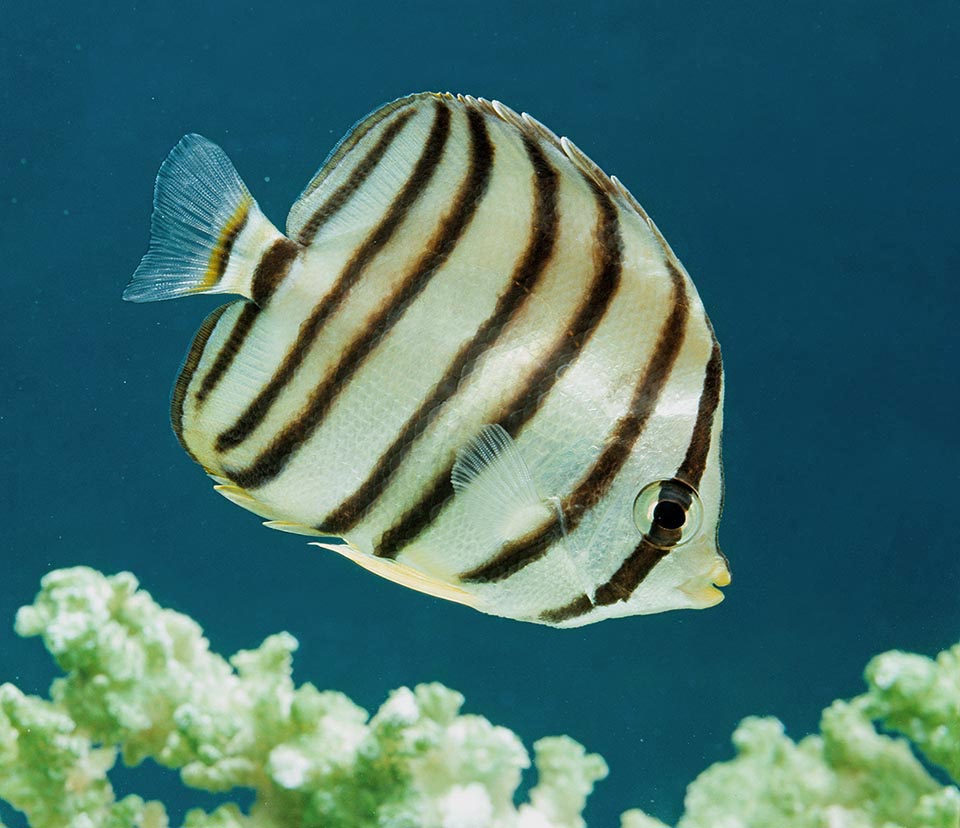
The Eightband butterflyfish (Chaetodon octofasciatus) is present in various sites of the Indian Ocean and of western Pacific © Giuseppe Mazza
The little Eightband butterflyfish (Chaetodon octofasciatus Bloch, 1787) belongs to the class of the Actinopterygii, the ray finned fishes, to the order of the Perciformes and to the colourful family of the Chaetodontidae.
The name of the genus Chaetodon comes from the Greek “χαίτη” (khaite) = hair and “ὀδούς” (odous) = tooth, due to the “bristle-shaped teeth”. The name of the species octofasciatus means in Latin “with eight bands”, with reference to its black vertical bands.
Zoogeography
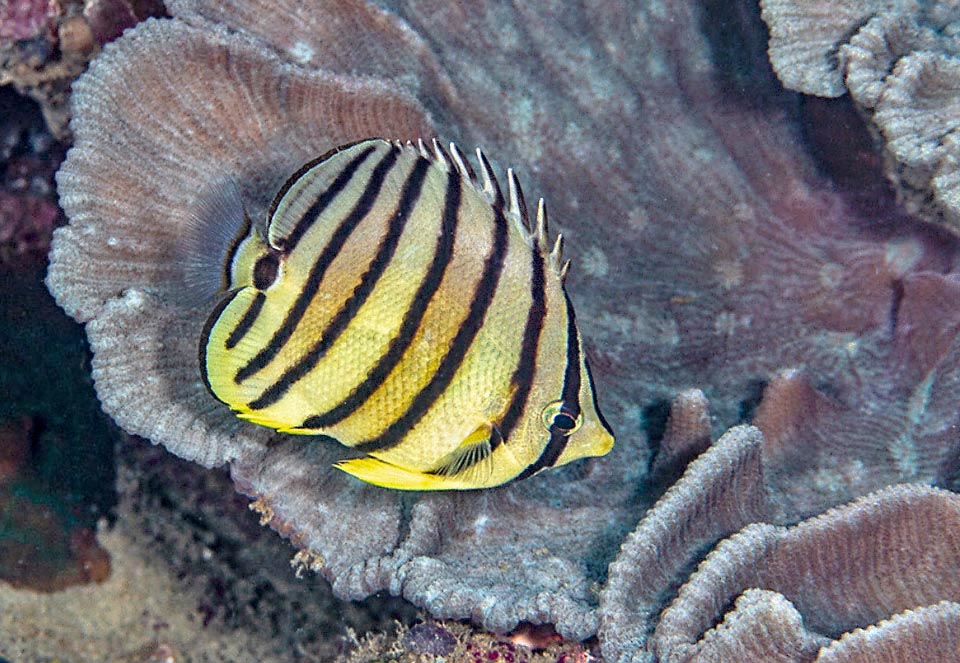
12 cm long at most, it swims in the shallow waters of the reefs, not more than 20 m deep, protected by a mimetic livery with vertical bands © Tim Cameron
It is more common in the tropical waters of the Pacific Ocean than in those of the Indian one.
We find it at the Maldives, India, Sri Lanka, Thailand, Malaysia, Australia, Indonesia, New Guinea, Micronesia, New Caledonia, Philippines, Taiwan and China up to southern Japan. Eastwards, it stops at the Solomon Islands.
Ecology-Habitat
It lives in the madreporic formations up to 20 m of depth.
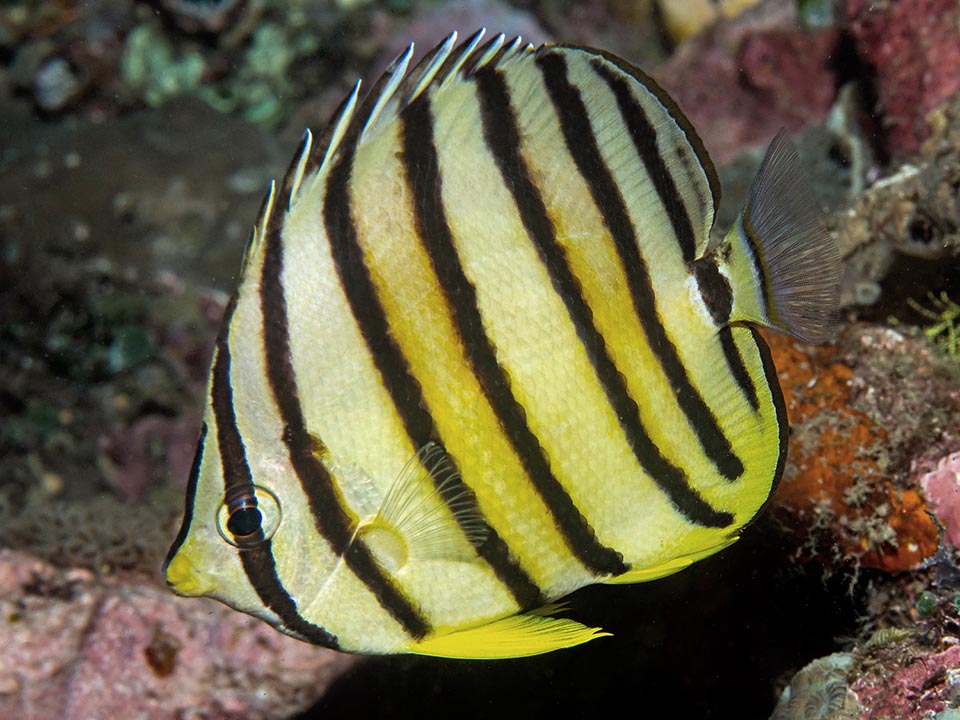
Omnivorous, it eats madreporic and vegetal polyps raising often the fins to appear larger and to exhibit the spiny rays of the dorsal to the predators © Brian Cole
Morpho-physiology
The Eightband butterflyfish is small and reaches, at the maximum, the 12 cm. The body is flat, more or less squared, with the dorsal profile of the head decidedly concave ending with an unusual mouth, done for tearing off the polyps of the corals.
The dorsal fin has 10-12 spiny rays and 17-19 soft; the anal has 3-4 spiny rays and 14-17 soft; the ventral and the pectoral ones are unarmed and the caudal is more or less blunt.
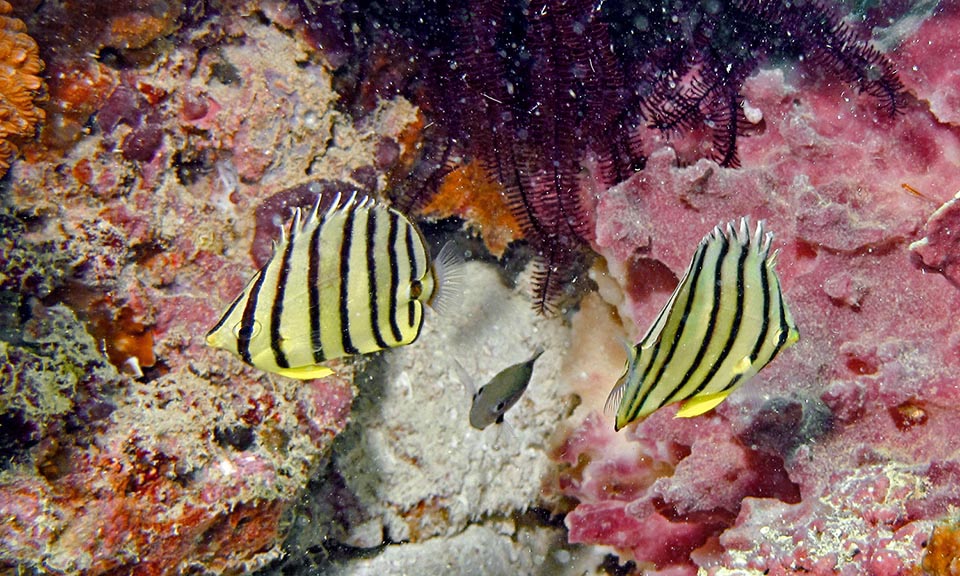
Here one would say that a small fish is enough to make the couple nervous. Reproduction occurs swimming and the fecundated eggs are entrusted to the currents © Bernard Dupont
On the background colour, yellowish white, we note seven dark vertical bands starting from the eye up to the caudal peduncle. The eighth one highlights the margin of the dorsal and the anal fins. The caudal fin, close to the translucent part, has also a small dark vertical band.
Ethology-Reproductive Biology
Usually it lives in pairs nourishing of polyps of various species of madrepores and benthic seaweeds.
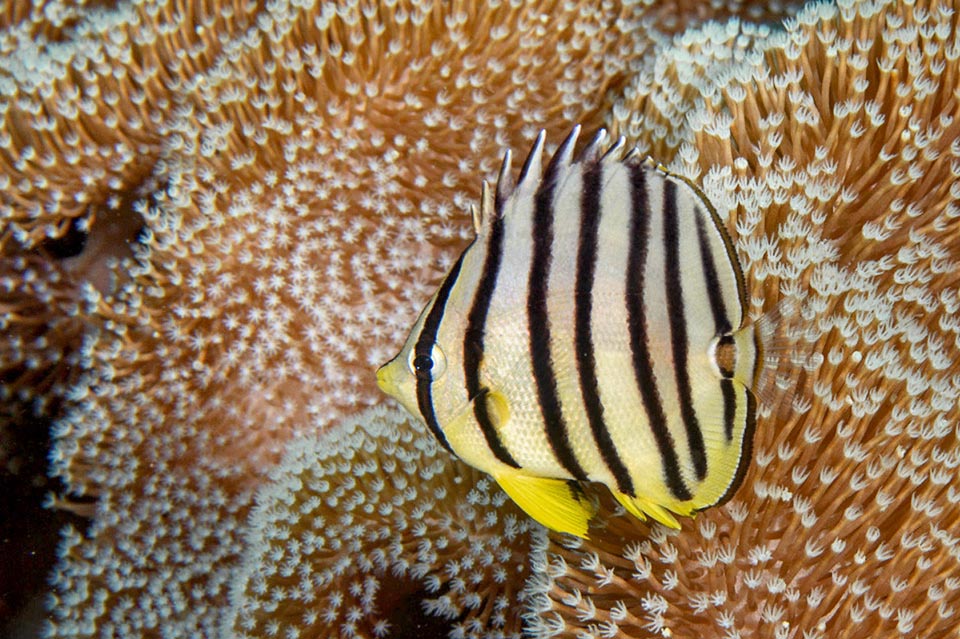
Little demanded by aquarists, with inexhaustible food resources and an excellent resilience, Chaetodon octofasciatus is not an endangered species © Tim Cameron
After the fecundation, the parents entrust the eggs to the currents. The juveniles are then often found under the protecting branches of the madrepores of the genus Acropora.
The populations are in condition to double in less of 15 months, the diet is varied and, furthermore, it is a species little required by the aquarists. Therefore, it is not surprising that their vulnerability index is very low: 11 per 100 only.
Synonyms
Chaetodon octolineatus Gronow, 1854.
→ For general information about FISH please click here.
→ For general information about BONY FISH please click here
→ For general information about CARTILAGINOUS FISH please click here.
→ To appreciate the BIODIVERSITY of BONY FISH please click here.
→ To appreciate the BIODIVERSITY of CARTILAGINOUS FISH please click here.
